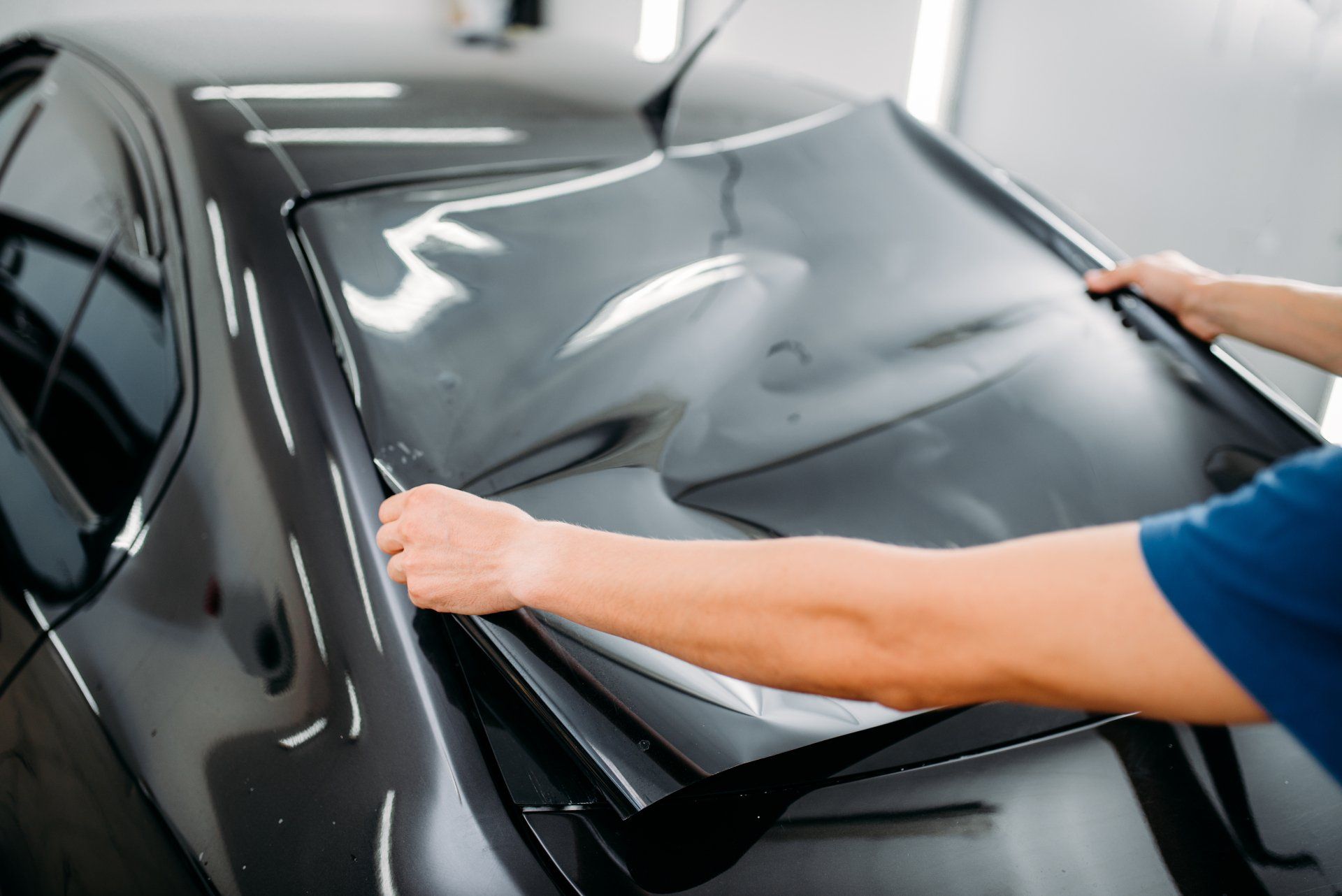How to Pick the Right Shade for Your Auto's Window Tinting
The Process of Professional Home Window Tinting Explained
From choosing the right movie type to the careful preparation of home windows, each step plays a vital function in accomplishing a remarkable application. Following these preliminary preparations, the cautious cutting and application of the movie need accuracy to avoid blemishes.
Choosing the Right Home Window Film
The initial factor to consider is the kind of movie, which can vary from dyed, metalized, to ceramic movies (window tinting). Dyed movies largely give personal privacy and visual improvement, while metalized films reflect warm and UV rays, improving energy effectiveness.
Following, think about the film's Visible Light Transmission (VLT) percent, which establishes just how much light enters the room. A lower VLT gives better personal privacy and warm rejection but may minimize all-natural light dramatically. In addition, the movie's solar warmth gain coefficient (SHGC) is important; a lower SHGC suggests better thermal efficiency, aiding to preserve interior convenience.

Preparing the Windows
When the appropriate home window movie has been selected, the next action is extensively preparing the windows for setup. This prep work is crucial for accomplishing ideal adhesion and guaranteeing a flawless look post-installation.
The initial job involves cleaning up the home windows diligently (window tinting). A high-quality glass cleaner is necessary, preferably one that is ammonia-free to prevent destructive any type of window seals or tint products. Utilizing a lint-free fabric or paper towels, specialists should get rid of any kind of dust, dirt, or oil, paying special focus to the sides and corners where particles usually gathers

Reducing the Movie
An accurate approach to reducing the movie is vital for ensuring an excellent fit on the prepared home windows. This action requires both ability and attention to detail, as errors can lead to undesirable spaces or overlaps that concession the aesthetic and useful top qualities of the tint.
Prior to cutting, the specialist should determine the home window dimensions accurately, accounting for any type of special forms or shapes. It is recommended to use high-quality home window movie, as this material tends to be more forgiving throughout the reducing process. The movie is commonly laid flat on a tidy, smooth surface, and a sharp utility blade is employed to make certain tidy edges.
To achieve optimum results, lots of professionals use templates developed from previous setups or make use of software program to develop specific patterns. A typical strategy entails adding an extra margin to the template, permitting changes during the application stage.
Moreover, reducing the film in a regulated environment minimizes the danger of impurities impacting the adhesive side. By adhering to these meticulous practices, home window tinting professionals can ensure that the film not just fits flawlessly however also carries out efficiently with time, enhancing both appearance and functionality.
Using the Tint
After meticulously reducing the film to the right dimensions, the next step entails applying the color to the home window surface. This process begins with making certain that the window is clean and devoid of any dust, debris, or deposits that can affect bond. A customized cleansing remedy is typically utilized, complied with by extensive drying with a lint-free cloth.
As soon as the surface is click here for info prepared, the installer will meticulously position the color film versus the glass. It is vital to line up the film precisely to avoid misplacement, as any kind of mistakes can result in a less than professional appearance. To facilitate this, the installer may utilize a light haze of application option on the sticky side of the movie, permitting mild rearranging if necessary.
Utilizing a squeegee, the installer will then start to push the movie onto the glass, functioning from the center outwards to get rid of air bubbles and make sure a company bond. This strategy is crucial, as it assures a smooth and perfect surface. Throughout the application, attention to detail is essential to avoid creases or flaws, ensuring that the tint not just boosts visual appeals yet likewise gives the preferred performance.
Last Assessment and Care
The final assessment is a critical action in the home window tinting procedure, guaranteeing that the setup fulfills both visual and practical requirements. During this phase, experts diligently check out the installed tint for any type of flaws, such as bubbles, creases, or imbalances. A comprehensive examination additionally consists of checking the adherence of the movie to the glass, along with its uniformity and total look.
After the assessment, proper treatment and upkeep instructions are offered to the client. It is vital to notify them regarding the suggested timeline for cleaning up the colored home windows, typically encouraging a wait of at least 1 month after installment to permit the sticky to treat totally. Customers need to be informed on suitable cleaning products and strategies, stressing the evasion of ammonia-based cleaners that can harm the tint.
Furthermore, professionals read this should advise clients on the find here significance of regular upkeep to extend the life of the color. This consists of periodic look for indicators of wear or damages and responding immediately to any kind of problems. By guaranteeing a comprehensive final evaluation and giving clear treatment standards, home window tinting professionals improve client satisfaction and the long life of their job.
Final Thought
The professional home window tinting process encompasses a number of vital steps that make sure premium results. Selecting the suitable film kind, preparing the home windows carefully, accurately cutting the movie, and using it with accuracy are important for achieving a flawless coating.